SUMMARY
VENOM: None
PREVALENCE: Uncommon
ACTIVE PERIOD: Active during the day
KEY ID FEATURES: Black head with tan body smoothly transitioning to reddish brown, brown, then gray at the tail, ~50cm
BEHAVIOR: Docile but can move fast if scared, may squirm if handled but almost never bites
SIZE: Small - 30-50cm
IUCN: LC - Least Concerned
OTHER: N/A
GALLERY
IMPORTANT: Many snakes have significant variance in coloration and pattern even within the same species. There can also be extreme differences in appearance from juveniles to adults so it is important to never assume you have properly identified a snake.
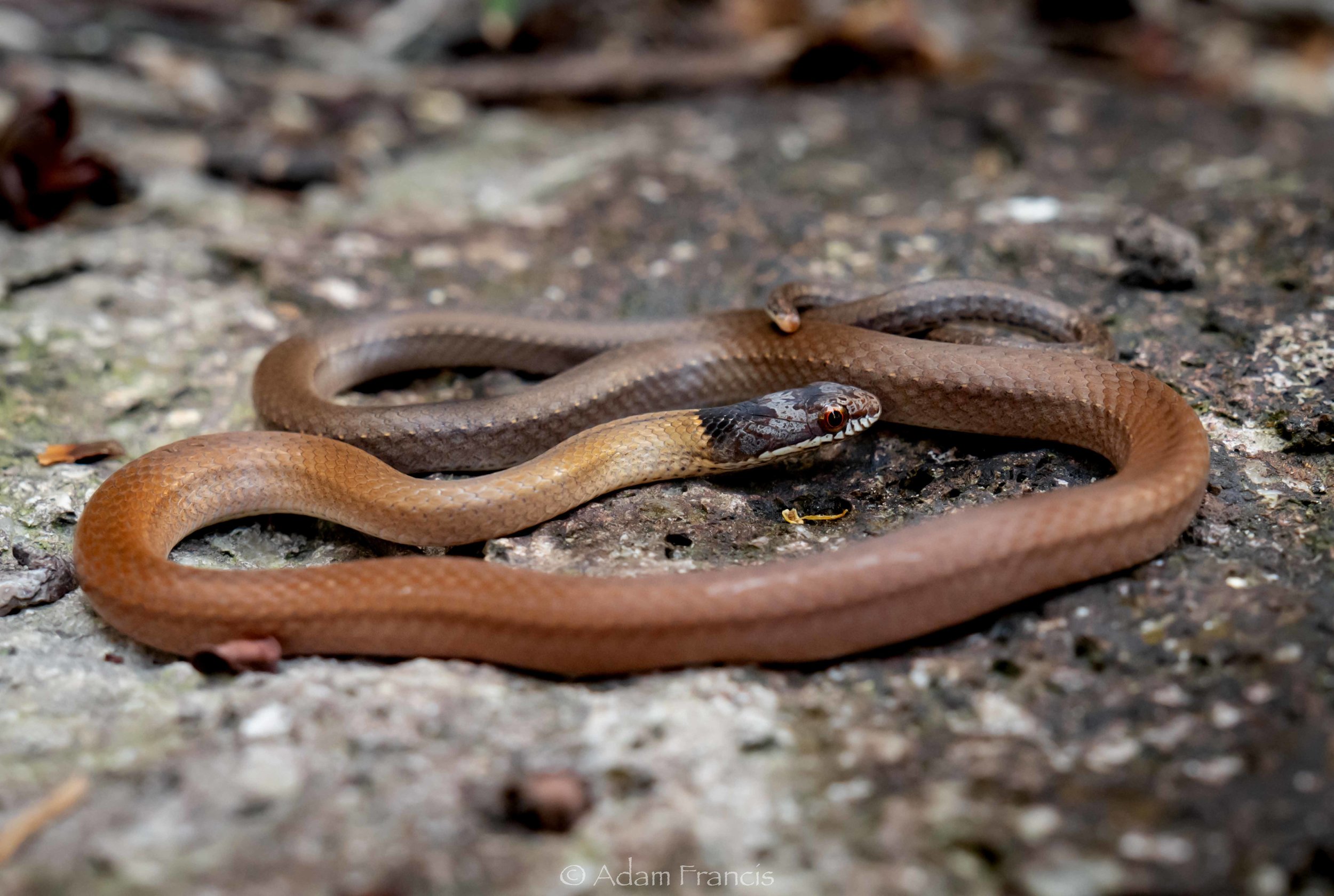
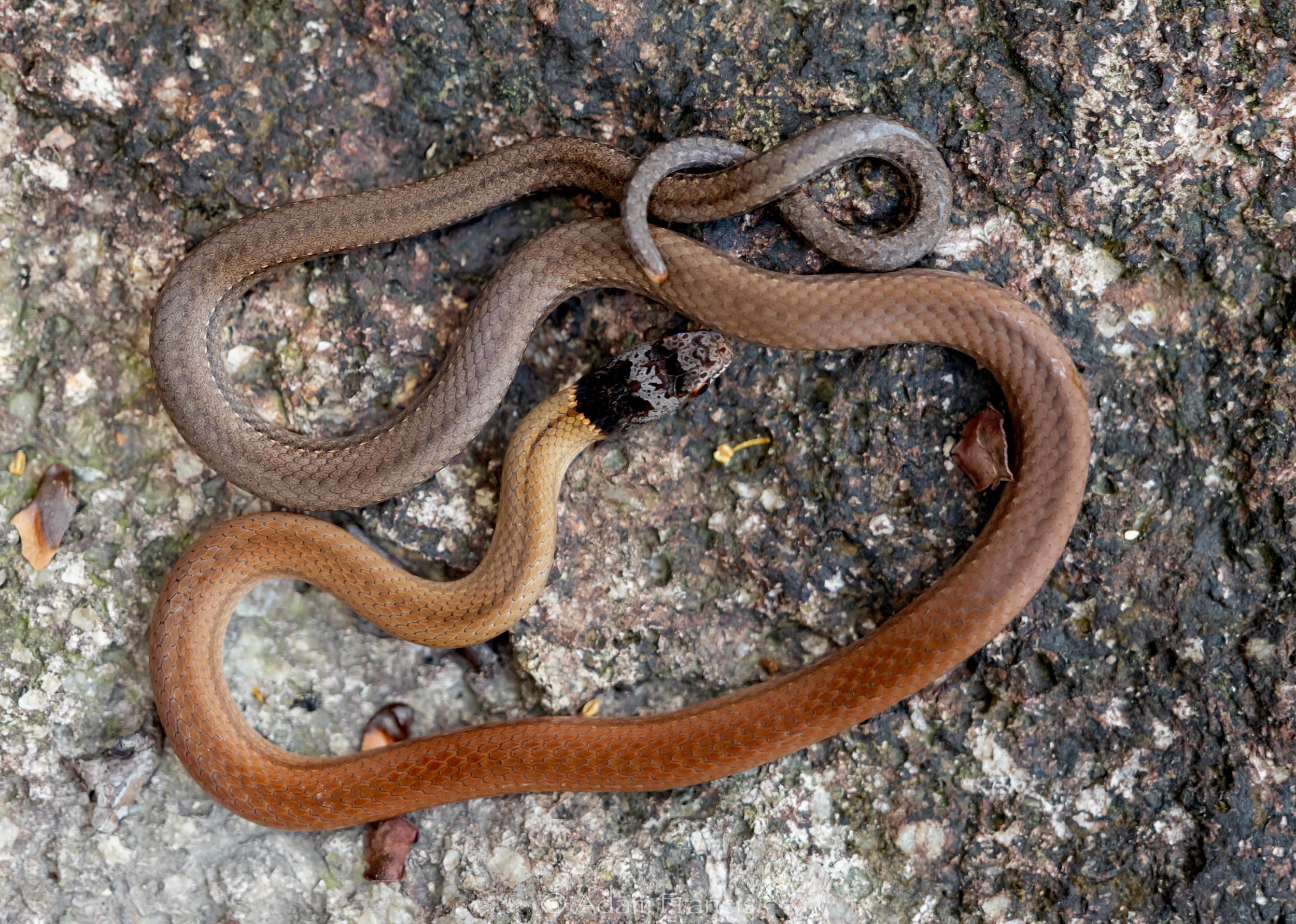
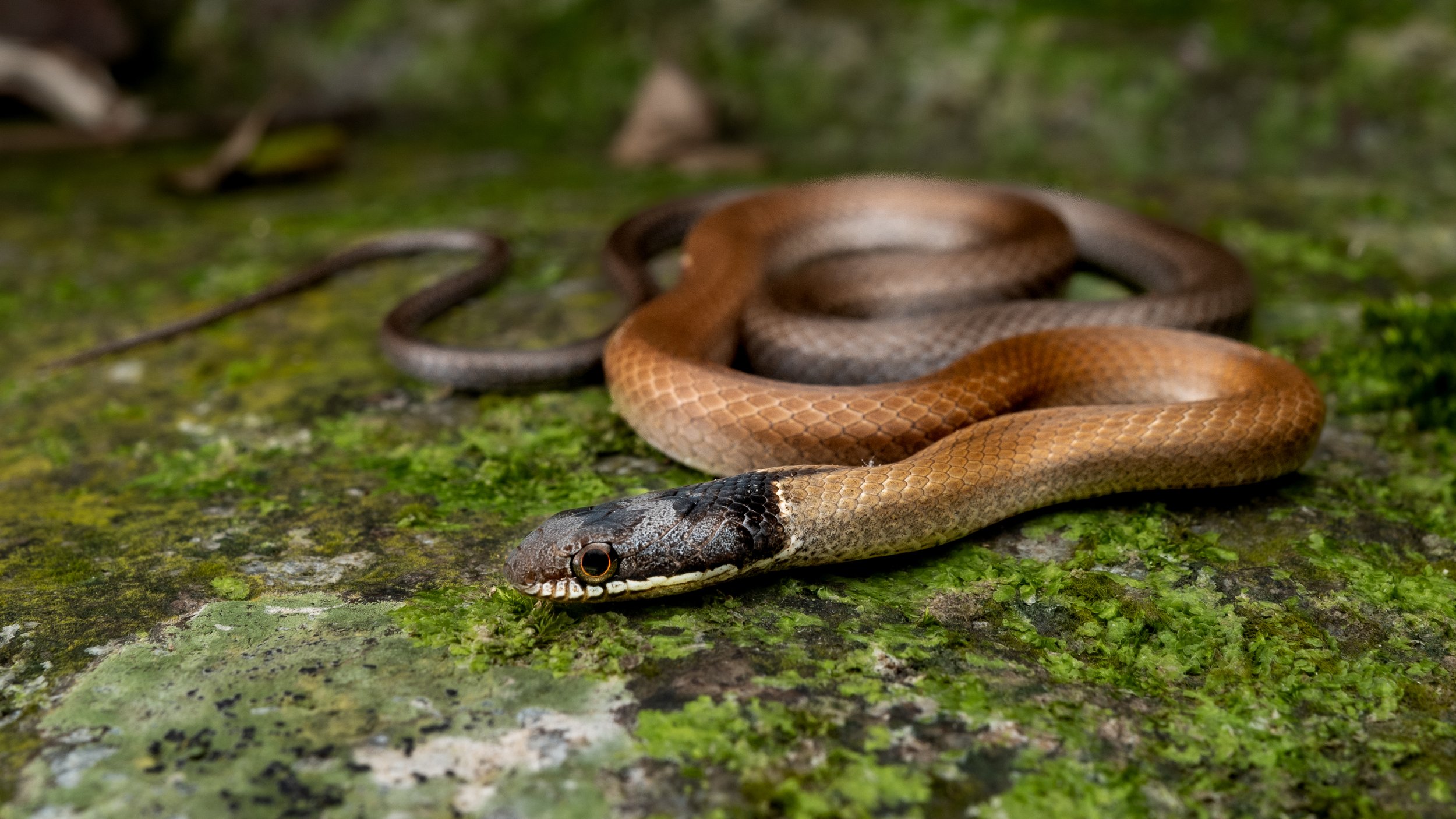
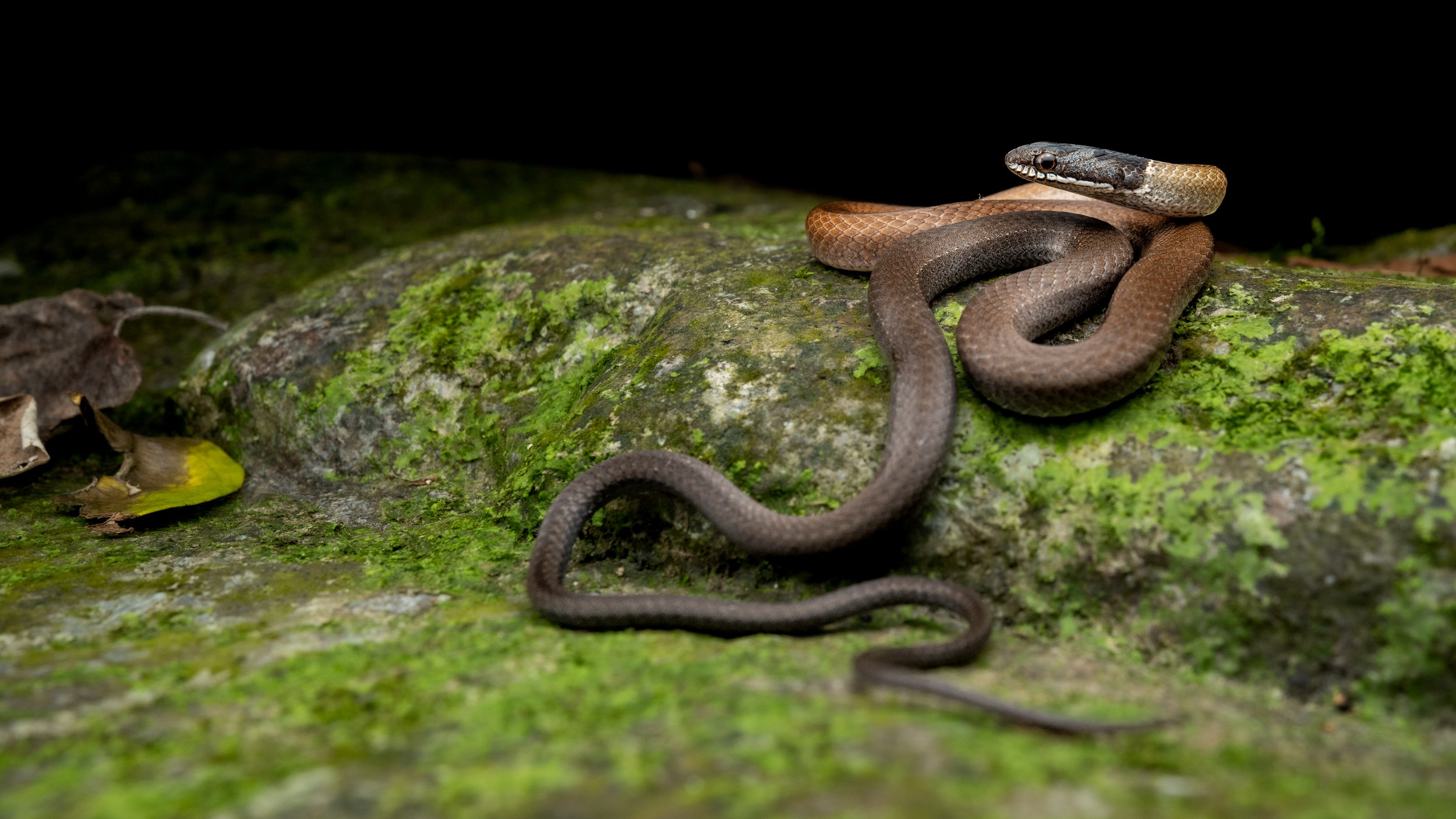
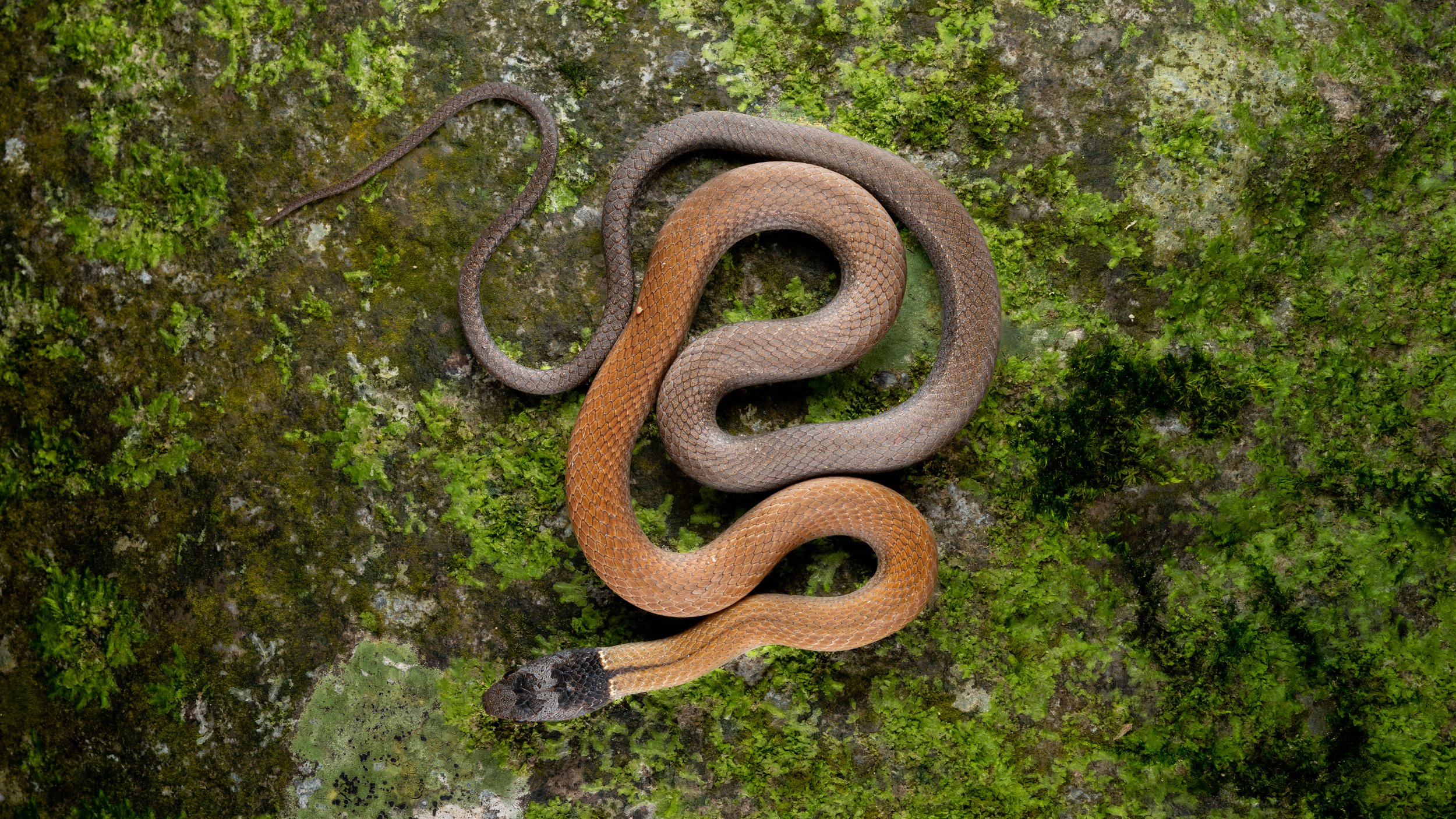
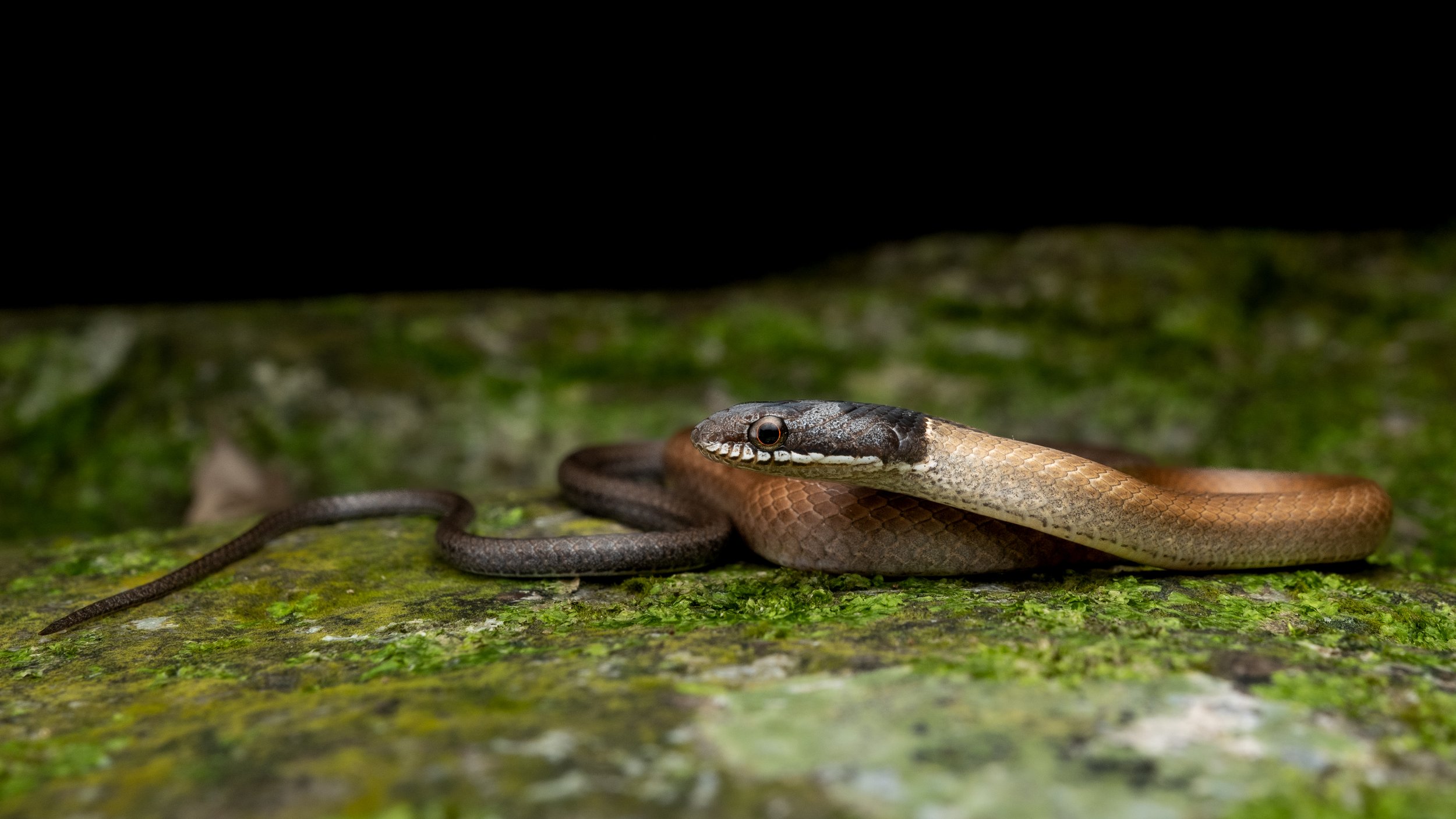
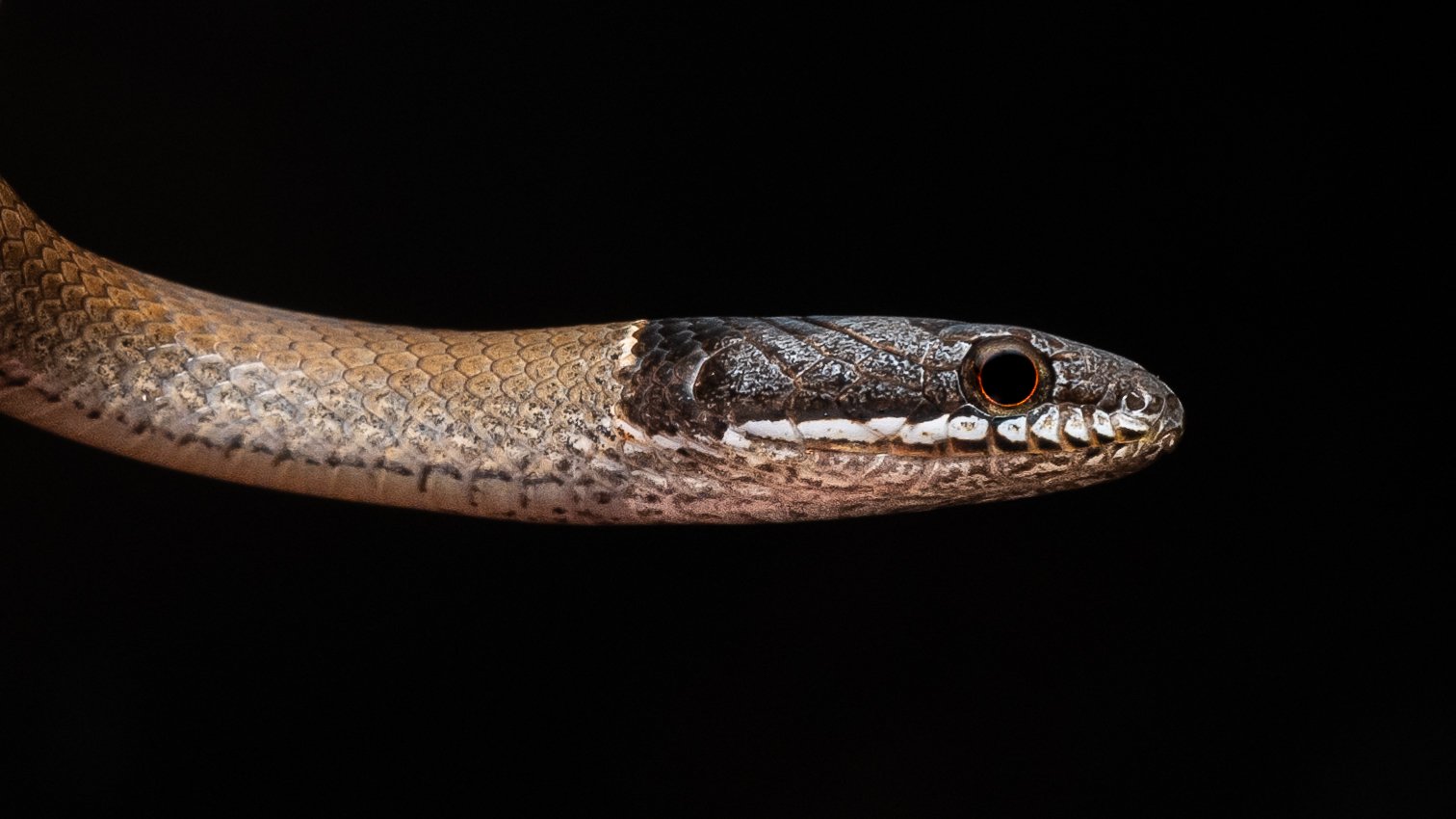
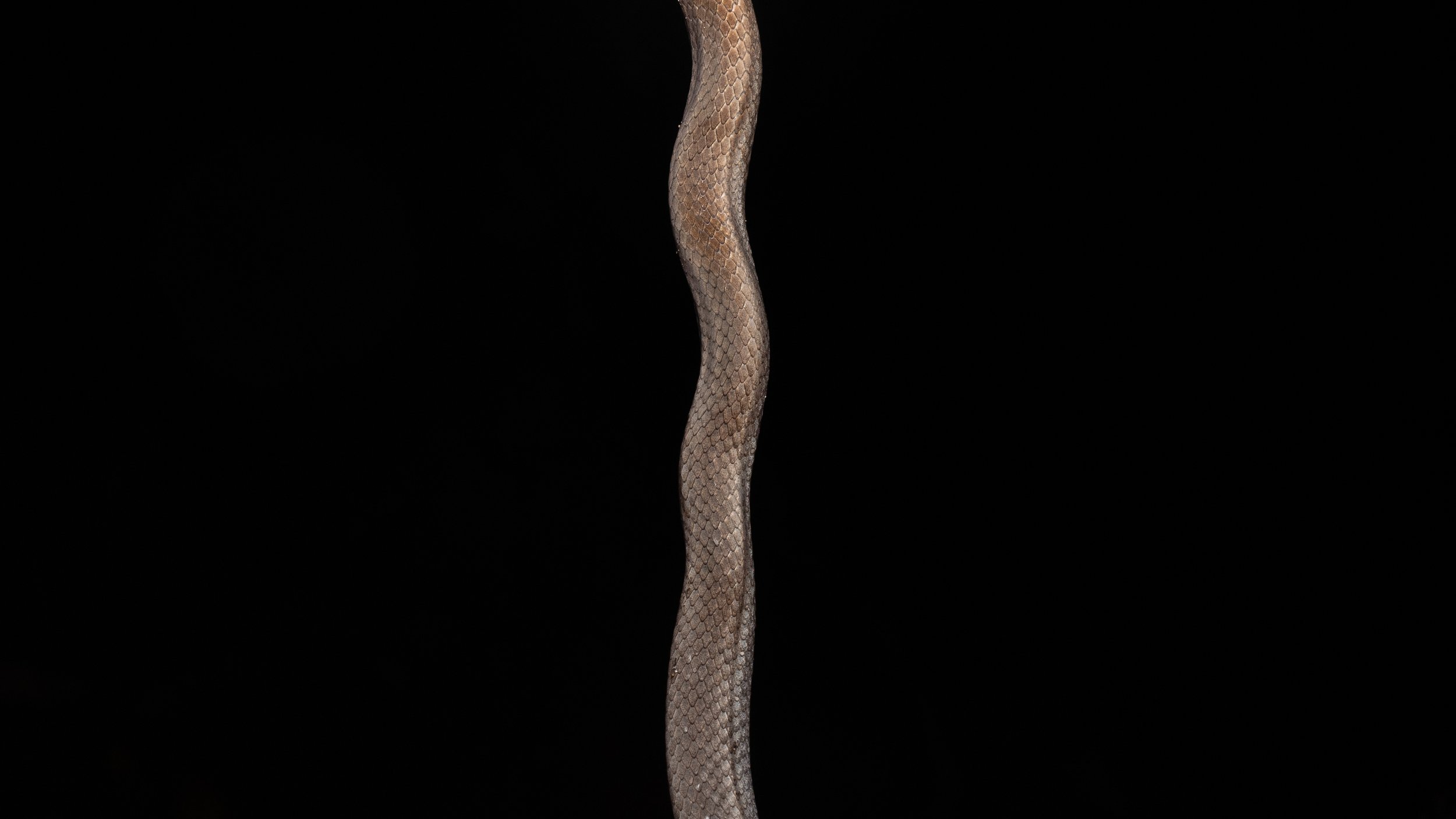


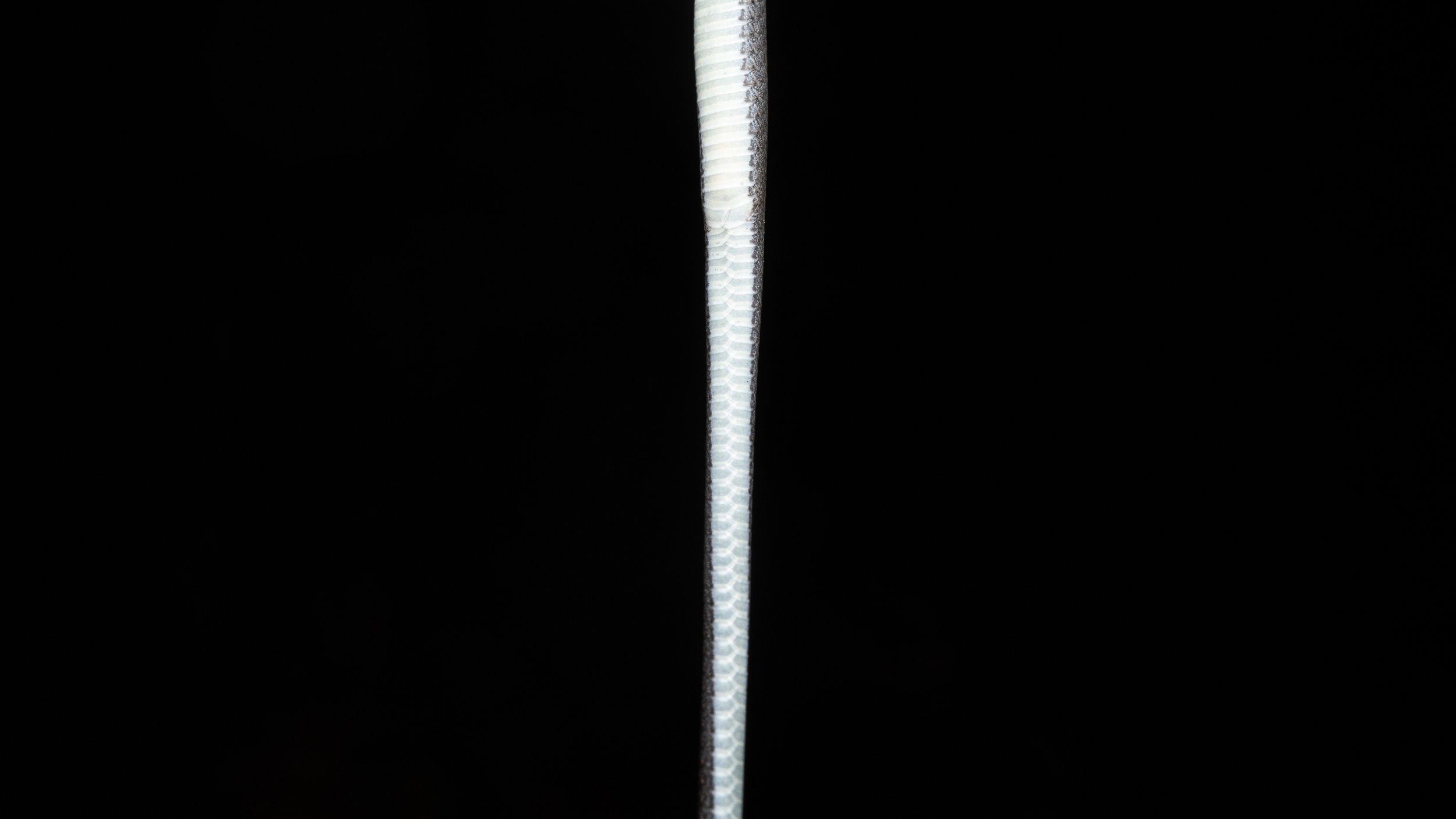
DESCRIPTION
~40cm in length, the Chinese Mountain Snake is a small species with a grayish black head that transitions sharply to a tan neck with a thin cream color collar. Body color transitions seamlessly from tan at the head to reddish brown, then brown, then dark gray at the tail. A faint dorsal stripe can be seen on most specimens starting from the head and fading off in the first third of the body.
BEHAVIOR
Active mostly during the day the Chinese Mountain Snake is a docile hunter of small lizards. As a result it is found near but not living in water. Generally move quickly when approached and may squirm when handled but unlikely to bite and not known to musk much. Very quick when startled despite its normally slow paced movement.
(Click here is video does not load: https://youtu.be/rJ_5YDOG62g)
HABITAT
Lives in moist forest or open hilly areas near water. Like many snakes they can be found in catch waters on occasion. Widely spread around Hong Kong but not very common.
MISTAKEN IDENTITY
NO SNAKE SHOULD EVER BE HANDLED BY ANYONE BUT EXPERTS: Given its small size it could be mistaken for juvenile species of several snakes, but generally unique in appearance and temperament. It should be noted that small snakes can be particularly dangerous due to difficulty in properly identifying them and difficulty handling them. As such they should never be handled or approached.


